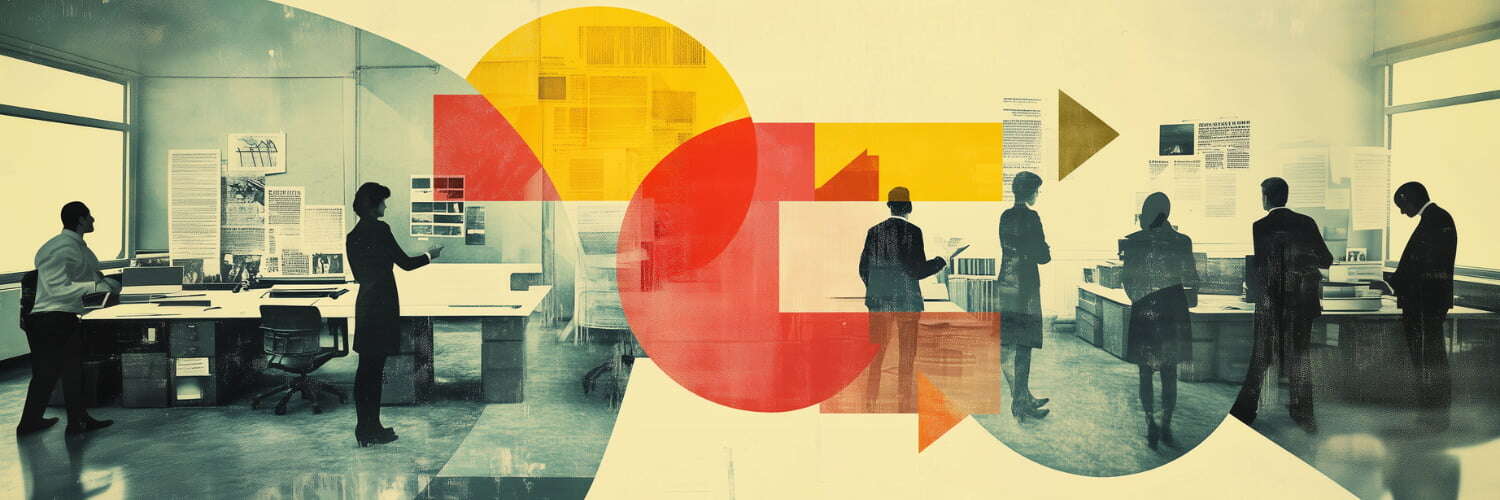While building a resilient organization has never been easy, the Covid-19 pandemic followed by a drastic change in the way we work, plus the Great Resignation effects, brought previously unthinkable challenges. To prepare, organizations must cultivate resilience, not just after the stock market crashes or a novel virus emerges, but every single day. Resilience provides a buffer against uncertainty and is the necessary platform upon which innovation and productivity in tough times are built.
So how should you maintain, and even strengthen resilience to surf the waves of change? Here is what you need to know!
What is Workforce Resilience?
Resilience is the ability to recover from a challenge and to use that challenge as a learning opportunity. In the workplace, resilience means solving problems, facing challenges, and recovering from mistakes. Here are some examples of what workforce resilience means:
Staying Calm With Last-Minute Requests
Feeling comfortable with last-minute requests and shifting priorities to meet deadlines means resilience. For example, when your VP tasks you with a major request that needs to be completed fast, right before your holidays, and you and your team immediately jump into action means you can easily shift your mindset and embrace a positive perspective. A low-resilience team would've felt discouraged, or frustrated in working on the task so close to the holidays, but your high-resilience team was able to embrace the challenge.
Taking Risks and Seeking Out New Challenges
Risk-taking is all about willingly venturing into unknown territory … something a low-resilience person is unlikely to do. For example, an employee is demonstrating resilience by showcasing the open-mindedness to test out new ideas and innovate. A low-resilient employee would likely feel less engaged and less willing to take risks.
Remaining Positive and Optimistic
When you tell your employees your director is leaving your company for another role, they are saddened by the news. However, they are not fearful, or mistrustful. Instead, they understand this is the best next step for the director, so the vibe is ultimately optimistic.
Moreover, high-resilient employees can see the bright side of the situation and don't dwell on the potential negative outcomes they could experience in their roles as a result of the director's departure. Instead, they trust your leadership and the organization at large will continue to meet their expectations.
Handling Feedback Well
In a recent performance review, you tell your employee that he's been underperforming. Your employee is unsurprised by this information and expresses his intent to further discuss how they can improve performance. This shows a highly-resilient employee harnessing optimism in the face of adversity. Additionally, resiliency enables people to handle rejection more smoothly by seeing it as an opportunity to grow.

The Benefits of Workforce Resilience
Once the foundations of resilience are settled, you will be able to enjoy its benefits:
Resilience Improves Productivity
BetterUp found that highly-resilient people were 31% more productive during the pandemic than low-resilience workers. They have fewer sleep issues, exercise more, and reported finding more meaning in their work.
Resilience Increases Employee Engagement
Resilient employees know that facing challenges at work can be easier when they can lean on their colleagues for support. Building positive workplace relationships can help employees during stressful times. ADP Research Institute found engagement and workplace resilience to be positively correlated - engagement explains 64% of resilience.
Resilience Transforms Challenges Into Lessons
Resilient employees view challenges as lessons they can use to build their skills and reduce their mistakes. These employees can recognize that workplace challenges serve as opportunities for growth.
Resilience Improves Employee Self-Esteem
Resilient employees have better self-esteem because they can handle challenges they face at work with confidence and positivity. For example, ADP also found workers who experienced at least five changes at work were 13.2X more likely to be highly resilient.
Resilience Boosts Job Satisfaction
Resilience can help employees feel more satisfied with their job because it provides them with methods of tackling stress and alleviating work-related anxiety.
Resilience Supports Innovation
Resilient employees feel more comfortable with the idea of failure. As a result, these employees may be willing to take well-informed risks within the workplace by trying new things, sharing new ideas, and leading team projects.

Can You Measure Your Workforce’s Resilience?
High levels of resilience in the workplace are accompanied by a feeling of confidence and control. To learn about their employees’ resilience, HR leaders can gain insights through surveys, and by keeping their doors open to employees who are experiencing difficulties. One of the best ways to gauge performance anxiety levels is through an anonymous workforce stress test. Questions like: “Do you feel as though your voice and opinions are valued?” are great indicators of whether employees feel included in their teams.
Aside from the insights gained directly from employees, HR leaders may need to zoom out to see more global shifts in workforce patterns. To gain a rough estimate of resilience levels, ask yourself: “How does my team respond to challenges?”, “Are productivity levels constant, or are there noticeable ups and downs?”
If, while answering these questions, you find that there is room for improvement, resilience training and other tools may benefit your workforce.
What is Workforce Resilience Training?
Teaching resilience depends on several factors. Some of them are determined by the personality and attitude of the employee, and others have to do with the environmental and cultural aspects of the company. Employees who are dedicated to self-improvement and who possess an interest in their professional development, are not only more likely to participate in resilience training, but also benefit from it.
An efficient resilience training should incorporate these elements:
- Use criticism constructively - a big part of resilience is being able to feel like you can correct and manage errors, without blowing them out of proportion. Errors are opportunities for growth, not definitions of who we are.
- Focus on strengths - a great way to build both confidence and resilience is by focusing on personal strengths, rather than dwelling on weaknesses.
- Build better communication - although independence and self-help should be prioritized, it is important for team members to always keep in mind that they are part of a team. Employees need to develop bonds that extend beyond moments of tension. So, sharing joy, personal interests, and other forms of positive communication can change everything.
How Hybrid Work Environments Impact Workforce Resilience
Workforce resilience depends both on adaptable people and strong leaders and on technology. By creating a workplace environment that makes employees feel secure, motivated, and connected, employers can build a resilient workforce able to thrive in good times while positioned to weather future crises.
Organizations failing to provide adequate support for all work environments - be it hybrid, fully remote, or on-site - risk damaging employee morale and retention. But what does adequate support look like? This survey showed that participants ranked positivity as the most important attribute for adapting to change in the workplace, followed by stress management, focus, empathy, and emotional intelligence. Building a resilient workforce is especially important during the current “Great Resignation” as employees who feel overly stressed or disconnected seek a job change as a key to improving how they are feeling.
Technology can and will drive significant changes to both the workforce and the business, bringing teams together and enabling better collaboration and communication. Organizations should use technology to gain a competitive advantage, while those who choose to ignore advances in technology will soon get left behind - regardless of their resilience in other areas.
.png?width=928&name=Blog%20post%20photos%202%20(2).png)
Tips for Employers: How to Build a Resilient Workforce
Here are some tips on how you can start building a more resilient workforce now:
Focus on Physical and Mental Health
Think about providing your employees with the resources necessary to remain strong physically — including fitness reimbursements, flexible work schedules to go on walks or runs during lunch, and even a fun workplace experience — is vital for ensuring long-term resiliency. Moreover, paid time-off and mental health days companywide for employees to rest and rejuvenate as needed are must-haves if you want to give your employees a mindset to stay relaxed, even in the face of stressful situations.
Offer Flexibility
A flexible work schedule allows employees to gain better work-life balance and stress management.
Let Employees Choose What Matters to Them
Consider offering your employees the chance to choose which employee benefits matter most to them, and enabling them to invest in whichever perks would best suit their lifestyles.
Invest in Resilience Training
After measuring the resilience level of your company, consider looking into activities specifically focused on building resilience.
Emulate Resiliency as a Leader
Your team is always looking to you as their leader for guidance, strategic direction, and advice — and they're also looking to you as an emotional compass. If you get way too high, or way too low, they will ride those waves with you. Resilient leaders create a multiplier effect on their teams. Teams that are more resilient, have higher levels of agility, purpose, and performance.
Practice Transparency Within Your Organization
No matter how resilient your workforce is, they won't feel comfortable or optimistic about company-wide or team-wide changes if they don't understand the why behind the change.
This is where transparency comes into play. While you don't have to over-explain, divulge confidential information, or apologize for your decisions, your team does deserve to understand the background context of the change and how leadership hopes it will impact the future of the company.
Finally — Equip Your Employees With the Skills to Adapt
The organizations of tomorrow develop and nurture resilient employees by focusing on measures that support them as they navigate an ever-changing world. While workplace disruption is inevitable, employers must embrace a human-centric approach and remember that every person deals with change differently.
To conclude, resiliency is key to creating an agile workforce. However, you can't always control the situations that arise in your workplace. But what you can control, if you've laid a foundation of resilience, is how your team reacts to those changes. The more resilient your employees are, the more likely they are to be happy, engaged, and motivated at work.
%20(11)%20(1).png)










